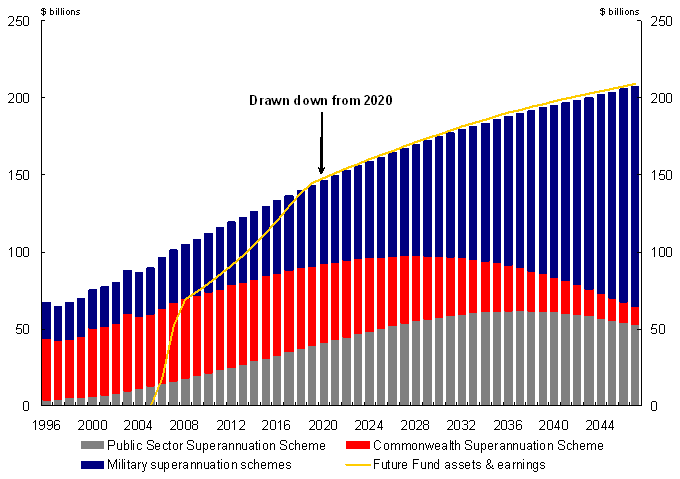Preliminary estimates indicate that the Australian Government general government sector recorded an underlying cash surplus of $17.3 billion (1.7 per cent of GDP) for 2006-07, which is $3.7 billion (0.4 per cent of GDP) higher than expected at the time of the 2007-08 Budget.
Of this sum around $2 billion arises from lower than budgeted spending. Around $1.7 billion arises from higher tax receipts.
Company tax receipts were higher by around $1billion, which reflected stronger company profits and some large one-off factors, including higher compliance programme payments. Superannuation fund tax receipts were higher by almost $0.4billion, reflecting stronger than expected realised capital gains earned by superannuation funds.
Lower spending was spread across a large number of programmes, including social and welfare programmes, largely reflecting stronger economic conditions.
The preliminary budget outcome for 2006-07 is the ninth cash surplus out of the past ten budgets. By delivering budget surpluses, the Government is adding to national saving, keeping pressure off inflation and supporting lower interest rates.
The 2006-07 Final Budget Outcome document will be released by the end of September 2007, as required by the Charter of Budget Honesty Act 1998.
After taking account of cash advances in the nature of loans, specifically HELP loans, there is around $15.5 billion of the 2006-07 surplus available for investment. Details are set out in the Attachment.
INVESTMENT OF 2006-07 BUDGET OUTCOME
The Government will use the realised surplus from 2006-07 to transfer $7 billion to the Future Fund immediately. This allocation of $7 billion, when combined with the proceeds from the second instalment of the sale of Telstra 3 in May 2008, will on current indications see the Future Fund accumulate sufficient assets to fullyoffset the Government’s unfunded public sector superannuation liabilitiesin 2020. This scenario should allow theFund to meet its objectiveswithout any additional Government contributions provided all earnings are re-invested (see Chart 1). If earnings or capital are taken out of the Fund it will not be able to meet its goal by 2020.
The Government announced in the 2007-08 Budget that it would transfer $5 billion into the Higher Education Endowment Fund (HEEF). Legislation establishing the Fund is expected to be passed in September 2007, with the Government guaranteeing that earnings of the HEEF will be available for distribution in 2008-09 as if it were established on 1 July 2007. In view of the better than expected outcome, the Government will now invest an additional $1billion capital in the HEEF, adding to the earnings available for distribution in future years. For cash management reasons, transfers to the HEEF will be made at the end of October 2007 ($3 billion) and the end of January 2008 ($3billion).
After allowing for cash advances in the nature of loans, specifically HELP loans there is $2.5 billion remaining for investment. This will be invested in the Health and Medical Investment Fund (HAMIF) by the end of the financial year after legislation is passed establishing the Fund. Earnings from the Fund will be available for distribution from July 2009 for new capital medical facilities, such as surgical theatres and high technology medical equipment to facilitate treatments which otherwise would not be provided for. Distributions from the Fund will be available under a competitive basis and be subject to demonstrated cost benefit analysis for all successful proposals.
HAMIF will be a permanent fund with the capital held in perpetuity. Only earnings will be expended. This is a further example of the Government investing for the future of all Australians. It will play an important role in addressing the future fiscal challenges identified in the Intergenerational Report 2007.
In addition to the initial allocation of $2.5 billion to the Health and Medical Investment Fund, the Government will invest the proceeds of the sale of Medibank Private Limited in 2008 in the Fund to generate higher earnings for saving lives and providing important medical treatment. The Fund will be open, along with the HEEF for further investment in the future.
Chart 1: Future Fund - Meeting Future liabilities

Source: Treasury estimates
